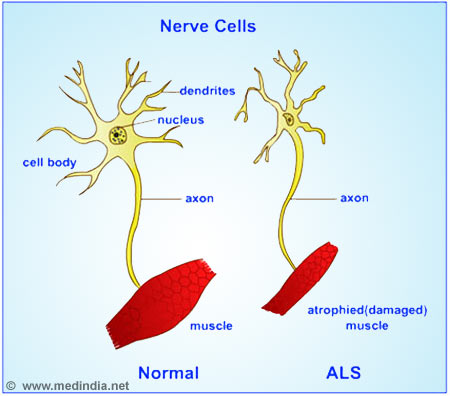Research into amyotrophic lateral sclerosis (ALS) conducted by VIB-KU Leuven has led to interesting and unexpected conclusions. When scientists were investigating the relevance of the higher expression of the IP3R2 protein in blood of ALS patients, the general expectation was that lowering the expression of this protein would have a protective effect on the affected motor neurons. But the exact opposite was true: IP3R2 turned out to be a protector against the negative effects of inflammation during ALS. Even more, the same mechanism may also apply to other diseases, such as stroke and multiple sclerosis.

This research was conducted in the VIB Laboratory of Neurobiology, led by professors Ludo Van Den Bosch and Wim Robberecht (VIB-KU Leuven). Other laboratories involved include Adrian Liston’s Translational Immunology laboratory (VIB-KU Leuven), Jo Van Ginderachter’s Inflammation Research Center (VIB-Vrije Universiteit Brussel), UZ Leuven and the Brain Science Institute RIKEN in Japan. The study’s remarkable conclusions are published in the scientific journal Human Molecular Genetics.
Protective receptor
ALS is a fatal and currently incurable neurodegenerative disease caused by the progressive loss of motor neurons and denervation of muscle fibers, resulting in muscle weakness and paralysis. In Europe, 2.7 out of every 100,000 people are diagnosed with ALS on a yearly basis. Around 10% of all cases are hereditary, 20% of which are caused by mutations in the gene encoding superoxide dismutase 1 (SOD1). For this type of ALS, mouse models have been developed and were used in this VIB research project.
Prof. Ludo Van Den Bosch (VIB-KU Leuven): “In blood of sporadic ALS patients, as well as in models of chronic and acute neurodegeneration, there is a significantly higher expression of the intracellular receptor IP3R2. When we removed the gene encoding IP3R2, the ALS mice didn’t just die quicker, we also saw systemic inflammation and increased expression of certain cytokines, proteins that plays an important role in the immune system. As a consequence, we conclude that doing the opposite, which is increasing the amount of IP3R2, is a protective response. Not only for ALS, but also for other neurogenerative diseases.”
An unexpected twist
The research process is a prime example of good science, where no hypothesis whatsoever pre-determines the outcome. Although the scientists expected that deleting the gene encoding IP3R2 which is responsible for the release of calcium from intracellular calcium stores would have a positive effect on the survival of motor neurons, the study proved the opposite: IP3R2 deletion had a negative effect on the survival of the ALS mouse model.
Prof. Ludo Van Den Bosch (VIB-KU Leuven): “The negative effects of IP3R2 removal in other cell types seem to outweigh the potential benefits of removing IP3R2 in motor neurons. In the case of unexpected findings like this, a researcher has two options: to stop the project, or to dig deeper into the problem. The last strategy is the most challenging one, as the outcome is uncertain. But, in this case, it has yielded interesting new insights, supported by our data.”
Next steps
The VIB lab is currently involved in a new ALS study in collaboration with the Stem Cell Institute Leuven (SCIL) and supported by the Belgian ALS Liga. Focusing on different cell types derived from skin fibroblasts of ALS patients, scientists are looking for aberrations in their calcium metabolism. The research into the role of the IP3R2 can serve as an important foundation, as it helps to strengthen the scientific community’s understanding of the mechanisms that may protect motor neurons.
Prof. Ludo Van Den Bosch (VIB-KU Leuven): “We have now proven that some aspects of inflammation could play an important role in the disease, which could eventually open new therapeutic options for patients. But if we really want to cure ALS, we need to understand all the ins and outs of ALS on the patient’s cellular level. Studies like ours are crucial pieces of this complex puzzle that we need to solve before we can develop a successful therapy.”